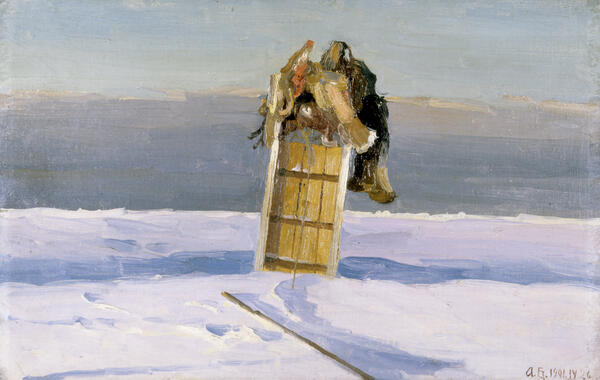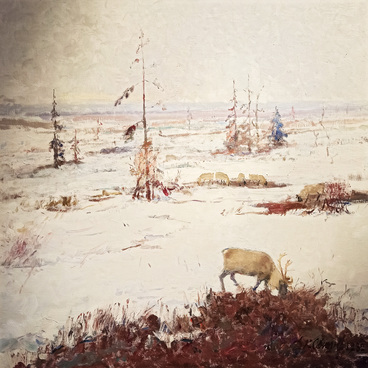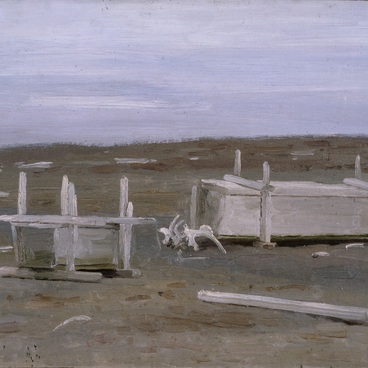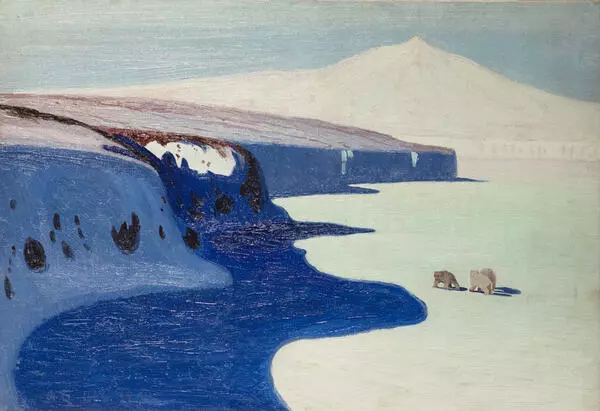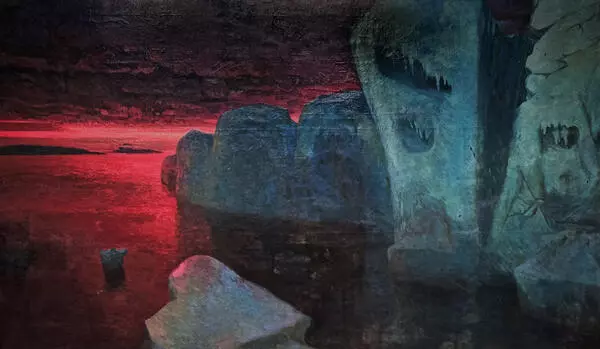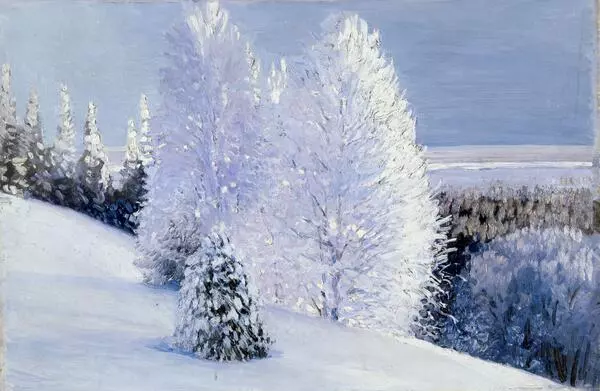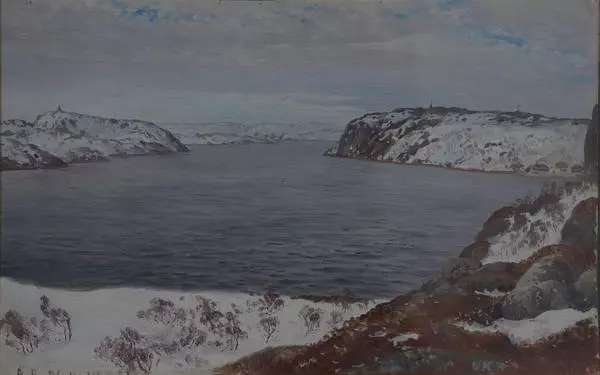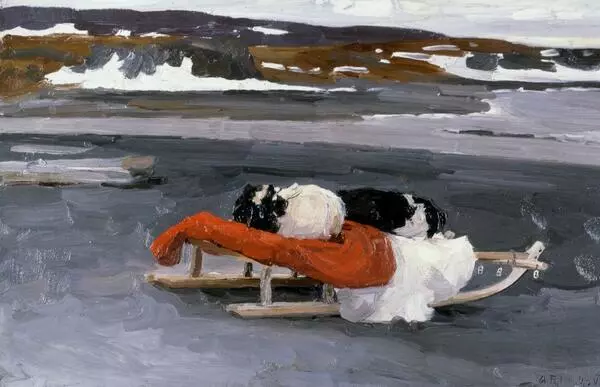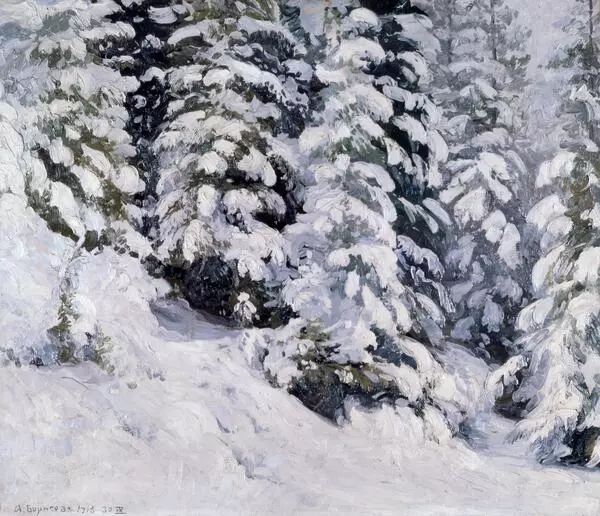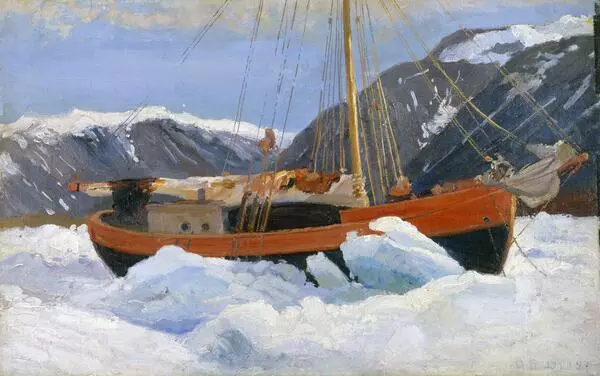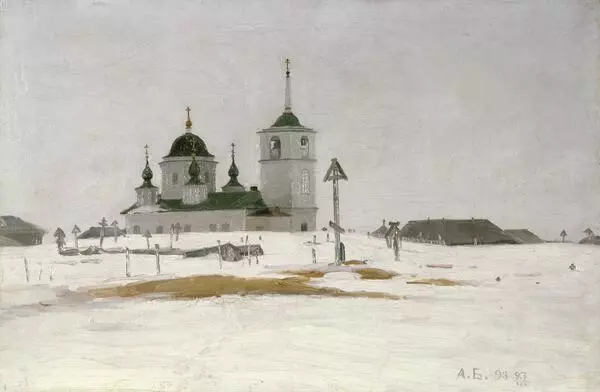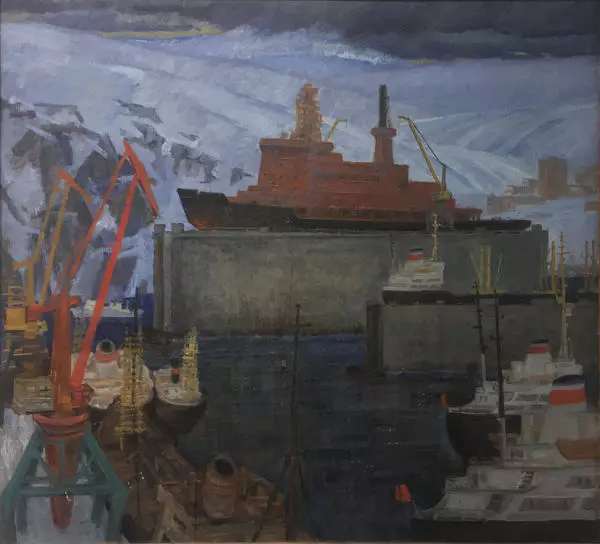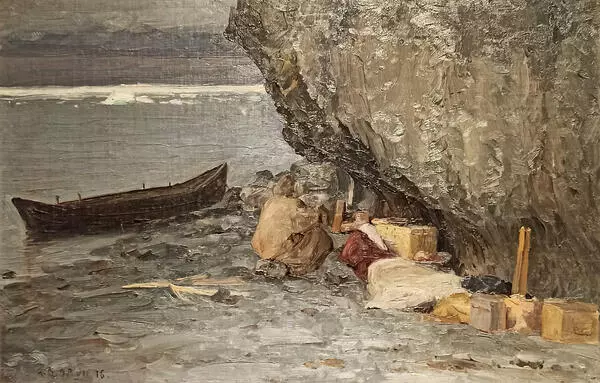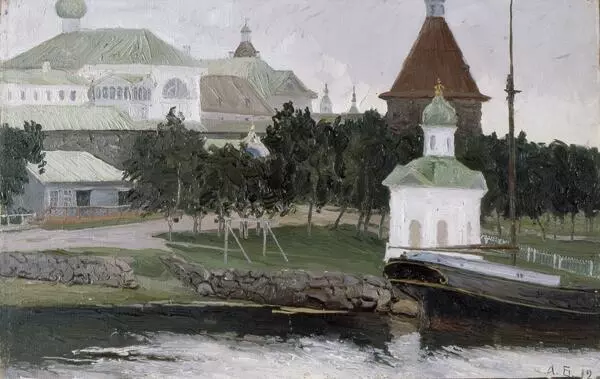In this study, the artist managed to capture a unique moment when the sun had just started to rise. On the pinkish-blue snow, there are golden glimpses. The horizon is marked by brown stripes of ground. The sky is illuminated with green light that is shifting to ultramarine.
In the centre, there is a sled plugged vertically in the snow, dog harnesses and clothing on the top of it. The sun paints the sled vivid orange, and the runners, bright yellow. The colours and the air in the paintings looks clean, almost transparent. Borisov, with his poetic nature, couldn’t help but notice the greatness of the moment: the awakening of the arctic sun. When it happens, the vivid colours of the typically bleak snow desert can rival with the southern landscape.
Like most of Borisov’s paintings, the study is characterized by a simple composition, clarity and neat lines. In the summer, so as not to carry around the objects they didn’t need, the Nenets used to leave them in the tundra placed on a sled. It was positioned vertically to protect the leather objects from dogs and other animals. In the artist’s diary, we read: ‘All the objects that won’t be necessary in the summer, such as warm clothes, boots, reindeer skins etc., are placed on the sled, covered with skins and tied up. The Samoyeds leave them in the tundra, in a well-visible place; in the autumn, they come back and recollect their possessions. Nobody used to take other people’s belongings and everything used to stay in place throughout the summer, but recently, people start stealing things.’
On the subject of the dogs that were normally used to pull sleds, the artist expertly commented: ‘The dogs eat everything: boots, coats. And as for the sealskin belts, the dogs consider them a delicacy. Especially if they have eaten a lot of seal fat. After that, they can eat almost everything, even reindeer fur. On the other hand, if the dogs were fed with meat of a reindeer that has died of malnutrition, they devour seal fat. If the dogs were fed with meat of a starved reindeer, they would become exhausted.’
In the centre, there is a sled plugged vertically in the snow, dog harnesses and clothing on the top of it. The sun paints the sled vivid orange, and the runners, bright yellow. The colours and the air in the paintings looks clean, almost transparent. Borisov, with his poetic nature, couldn’t help but notice the greatness of the moment: the awakening of the arctic sun. When it happens, the vivid colours of the typically bleak snow desert can rival with the southern landscape.
Like most of Borisov’s paintings, the study is characterized by a simple composition, clarity and neat lines. In the summer, so as not to carry around the objects they didn’t need, the Nenets used to leave them in the tundra placed on a sled. It was positioned vertically to protect the leather objects from dogs and other animals. In the artist’s diary, we read: ‘All the objects that won’t be necessary in the summer, such as warm clothes, boots, reindeer skins etc., are placed on the sled, covered with skins and tied up. The Samoyeds leave them in the tundra, in a well-visible place; in the autumn, they come back and recollect their possessions. Nobody used to take other people’s belongings and everything used to stay in place throughout the summer, but recently, people start stealing things.’
On the subject of the dogs that were normally used to pull sleds, the artist expertly commented: ‘The dogs eat everything: boots, coats. And as for the sealskin belts, the dogs consider them a delicacy. Especially if they have eaten a lot of seal fat. After that, they can eat almost everything, even reindeer fur. On the other hand, if the dogs were fed with meat of a reindeer that has died of malnutrition, they devour seal fat. If the dogs were fed with meat of a starved reindeer, they would become exhausted.’

